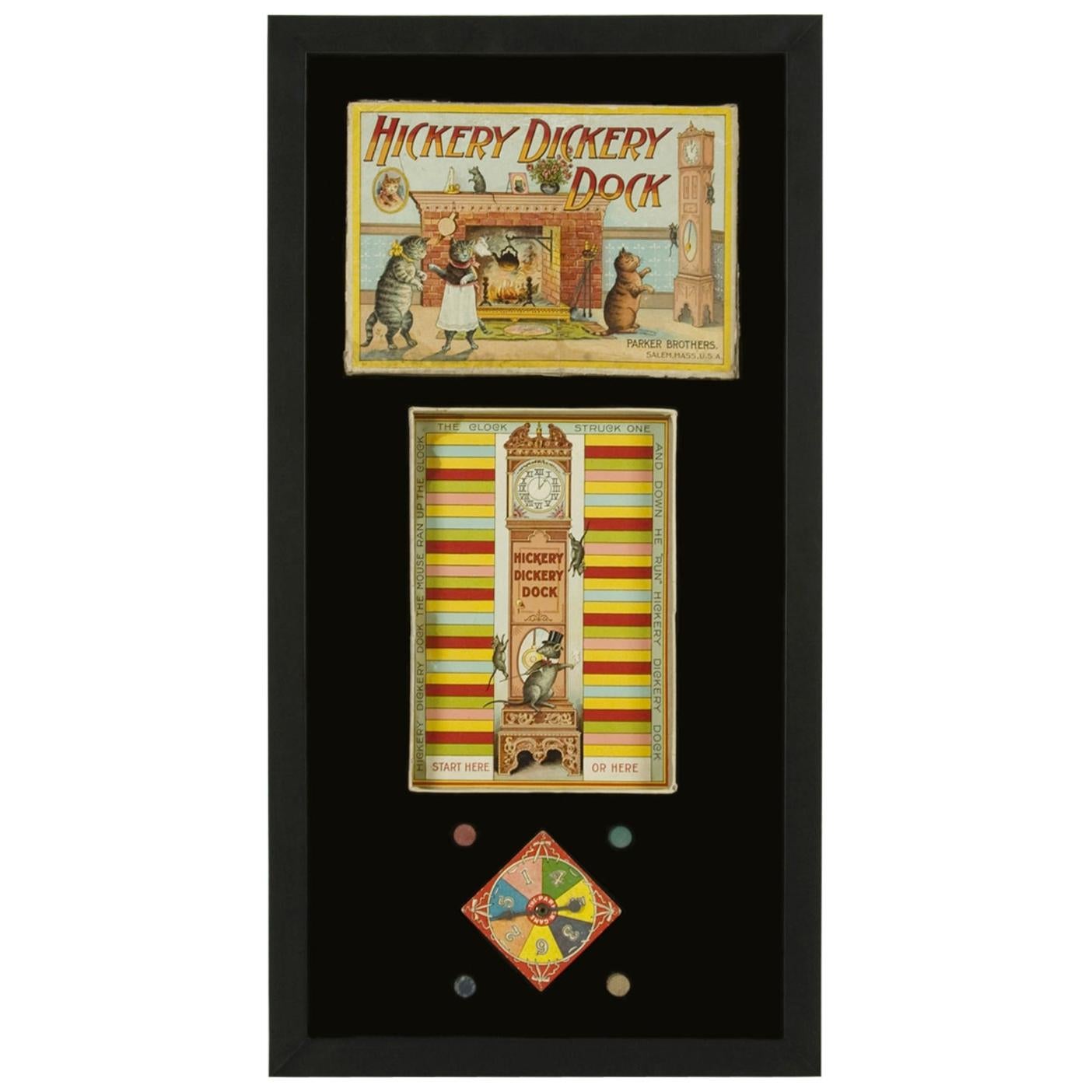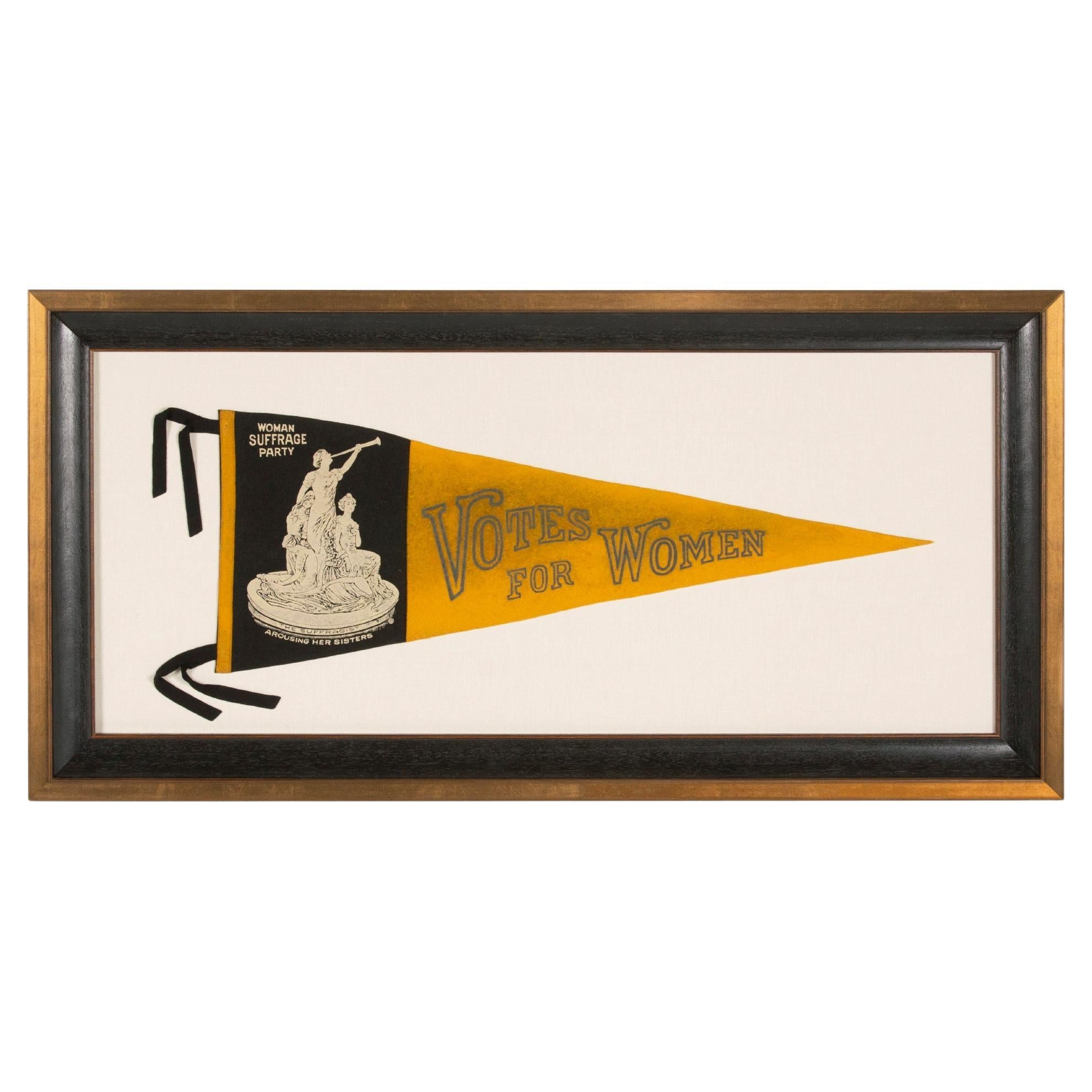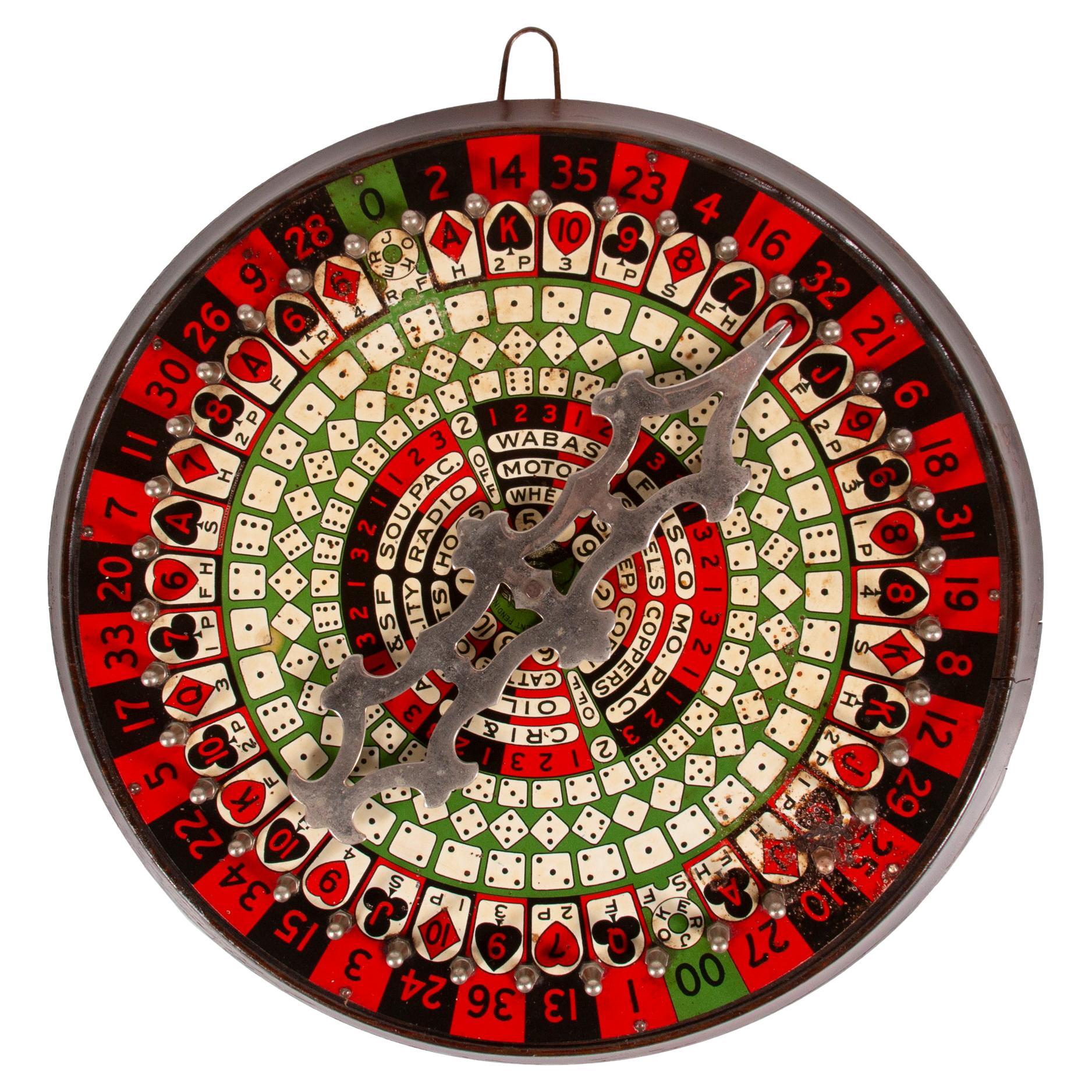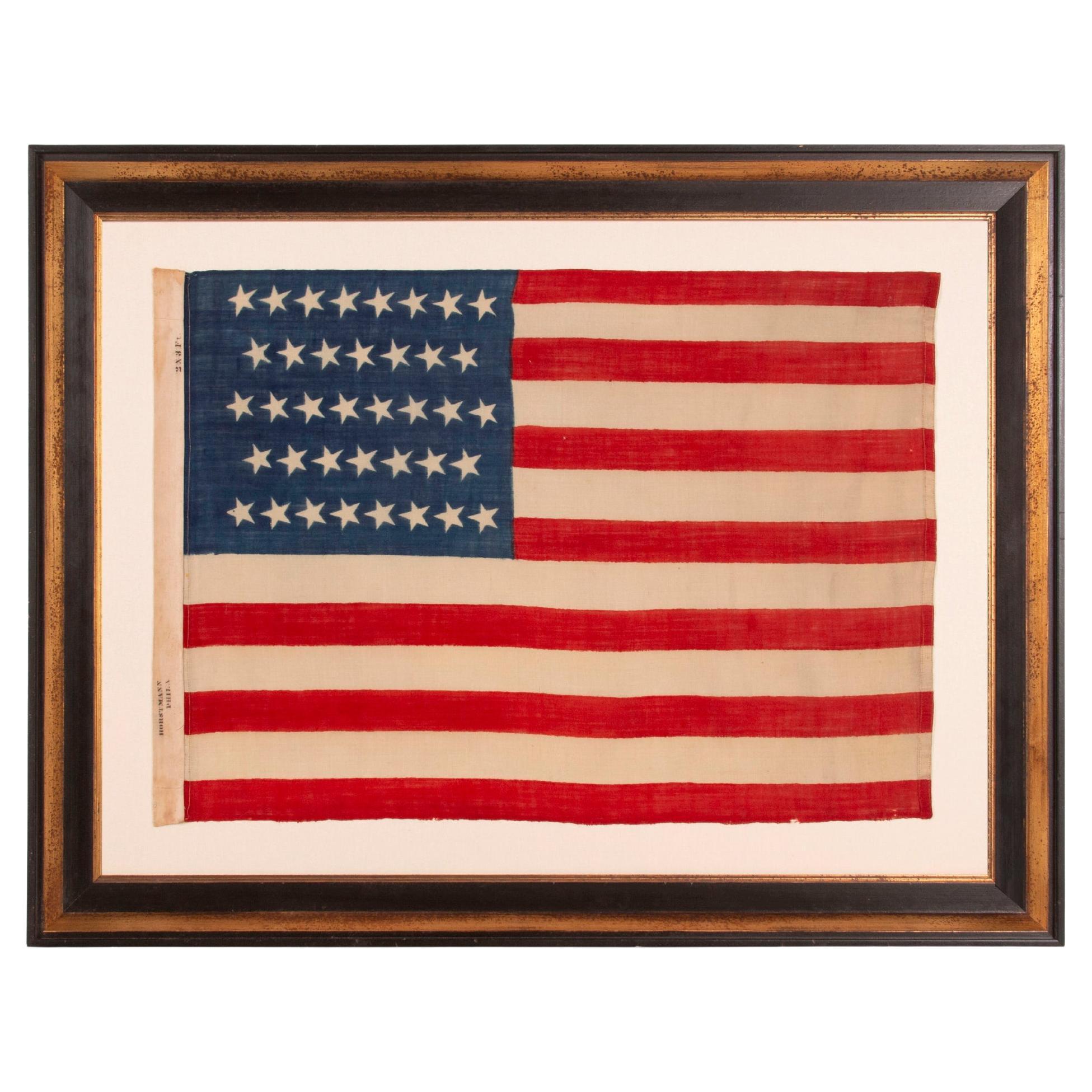Items Similar to "Visit to Camp" Rare Card Game by McLaughlin Brother of New York, Ca 1871
Want more images or videos?
Request additional images or videos from the seller
1 of 7
"Visit to Camp" Rare Card Game by McLaughlin Brother of New York, Ca 1871
About the Item
“Visit To Camp,” an extraordinarily rare card game by mclaughlin brothers of new york, circa 1871.
This extremely rare card game, designed with Civil War context, was made by McLoughlin Brothers in New York City. The set includes 12 (complete) chromolithographed, character playing cards, and 68 (out of 72) object cards, with various accoutrements. All of the above are housed in a wooden storage box with a slide lid and a chromolithographed, paper label.
Played in an ad-lib, story-telling format, the characters include the Colonel, the Captain, the Zouave soldier with red pantaloons, the Rifleman, the Artilleryman, the Riding Master, the Musician, the Ferrier, the Surgeon, the Sapper (engineer), the Sutler (cook), and the Vi Vandeer (a woman who takes care of the troops).
Each character was originally linked to 6 objects, which were to be produced by players on demand during a spoken reading of the game’s convoluted story-line. There are actually 69 cards included here, one of which is an object card for “the Chinaman.” Since the card matches the style exactly in printing, shape, and scale, and since there was no Chinaman in this game, I presume that the card must have once accompanied another McLaughlin ad-lib deck.
The instructions (reproduced, in scale) list 13 possible players, with the 13th acting as narrator. I could locate only 3 other copies of this extremely rare game, all of which included 12 cards.
McLoughlin Brothers is said to have pioneered the systematic use of color printing technologies in children’s books. The publishing firm opened in 1820 and was active until 1920, when it was sold to Milton Bradley. During the early years, the product line included toys in addition to books, among which were games, blocks, and paper dolls. Artwork from famous illustrators such as Thomas Nast, William Momberger, Ida Waugh” (Laura Wasowicz), Justin Howard, and Palmer Cox, decorated the firm’s many objects and publications. This is, in fact, where their works earned their popularity. Some of the most collected and valuable American game boards were produced by the McLoughlins.
The character cards and label of this deck are almost the work of Justin H. Howard, whose political cartoons appeared regularly in Harper’s Weekly beside those of Thomas Nast. In February of 1871 McLoughlin Brothers moved its operations to 71 Duane Street (as listed here on the lid label).
Mounting: The cards have been mounted using mylar corners and so are easily removable. The box was countersunk into the mounting board and is held on with a length of mylar. The background is 100% cotton twill, black in color. The black fabric has been washed to reduce excess dye. An acid-free agent was added to the wash to further set the dye and the fabric was heat-treated for the same purpose. The mount was placed in a black-painted Italian molding, to which a beveled, gold molding was added as a liner. A shadowbox was created to keep the glazing away from the cards. This was wrapped in burgundy red fabric. The glazing is U.V. protective plexiglass.
Condition: Moderate wear to box. 4 object cards absent. Modest to moderate edge wear, creasing and staining.
- Dimensions:Height: 36.5 in (92.71 cm)Width: 36.5 in (92.71 cm)Depth: 3 in (7.62 cm)
- Materials and Techniques:
- Place of Origin:
- Period:
- Date of Manufacture:1871
- Condition:See Item Description.
- Seller Location:York County, PA
- Reference Number:
About the Seller
5.0
Recognized Seller
These prestigious sellers are industry leaders and represent the highest echelon for item quality and design.
Established in 1991
1stDibs seller since 2008
61 sales on 1stDibs
Typical response time: 9 hours
- ShippingRetrieving quote...Ships From: York County, PA
- Return PolicyThis item cannot be returned.
More From This SellerView All
- Hickory Dickery Dock Early Parker Brother Board GameLocated in York County, PAHickory Dickery dock: Early Parker Brothers board game with great cat & mouse and tall case clock graphics, 1900. Patented in 1899 and produced in 1900, this colorful Parker Broth...Category
Antique Late 19th Century North American Game Boards
MaterialsPaper
- Carrie Chapman's "Woman Suffrage Party" Pennant, New York City, ca 1912-1920Located in York County, PA"VOTES FOR WOMEN" PENNANT WITH AN IMAGE OF A 1911 STATUETTE CALLED "SUFFRAGIST" BY ELLA BUCHANNAN, MADE FOR CARRIE CHAPMAN CATT'S "WOMAN SUFFRAGE PARTY" OF NEW YORK CITY, CA 1912-20 ...Category
Mid-20th Century American Political and Patriotic Memorabilia
MaterialsCotton
- Colorful Painted Sheet Metal Game Wheel ca 1890-1910Located in York County, PACOLORFUL PAINTED SHEET METAL GAME WHEEL ON A SHAPED WOODEN FRAME WITH A NICKLE-PLATED SPINNER, circa 1890-1910 Red, black, white, and green game whee...Category
Antique Late 19th Century North American Game Boards
MaterialsWood
- 38 Star Antique American Flag by Horstman Brothers, Colorado Statehood, ca 1876Located in York County, PA38 CANTED STARS IN STAGGERED ROWS, ON A CLAMP-DYED, WOOL, ANTIQUE AMERICAN FLAG MADE BY THE HORSTMANN BROTHERS IN PHILADELPHIA, ALMOST CERTAINLY FOR DISPLAY AT THE 1876 CENTENNIAL EXPOSITION; A VERY RARE EXAMPLE WITH STRONG COLORS AND GREAT TEXTURE; REFLECTS COLORADO STATEHOOD 38 star American flag, press-dyed on wool bunting, with wonderful texture and great colors. Made by Horstmann Brothers of Philadelphia, a major military outfitter, the flag is signed along the hoist with a black stencil. The stars of the flag are arranged in lineal rows of 8-7-8-7-8. Note how these are universally canted, with one point directed at roughly 11:00, when the flag is viewed on the obverse (front). This particular style of flag, from Horstmann, is exceedingly rare. Measuring approximately two by three feet, I know of just four examples in total, including this flag, all of which I have had the great privilege to own. The first two I acquired about 20 years ago. I was not yet taking digital imagery at the time, and cannot seem to locate them among my files of hard copy prints and negatives. I believe they displayed in the same configuration of staggered rows. The example that I owned more recently bore the staggered row layout, but had exceedingly crude printing, whimsical and interesting in its own right. All, I believe, have displayed their stars slightly canted at an angle, like the flag that is the subject of this narrative. A close variation that I acquired about 11 or 12 years ago also had canted stars. It was in the same scale and shared the same 8-7-8-7-8 distribution, but the rows were not staggered. Instead these were justified toward the fly end. Because the spacing was inconsistent, the resulting formation was not what one might expect, with perfect spaces for two additional stars along the hoist end (a “notched” pattern). Horstman flags made of press-dyed wool sometimes had formal bindings, sometimes had a length of fabric tape stitched along the hoist, and sometimes had no binding at all. This one has a traditional binding, made of heavy cotton twill, in the form of an open sleeve, treadle-sewn along the hoist. Near the top of this, “2 x 3 Ft.” appears in a black inked stencil, near the top, accompanied by “Horstmann. Phila.” Near the bottom. Colorado became the 38th state on August 1st, 1876. This was the year of our nation’s 100-year anniversary of independence. Per the Third Flag Act of 1818, stars were not officially added until the 4th of July following a state's addition. For this reason, 37 was the official star count for the American flag in 1876. Flag-making was a competitive venture, however, and few flag-makers would have continued to produce 37 star flags when their competitors were making 38’s. It is for this reason that 38 and 13 stars (to represent the original 13 colonies) are more often seen at the Centennial Expo. Some flag-makers would have been adding a star for the 38th state even before it entered the Union, in the early part of 1876 or even prior. In fact, many makers of parade flags were actually producing 39 star flags, in hopeful anticipation of the addition of two more Western Territories instead of one. But the 39th state would not join the Union for another 13 years, when the Dakota Territory entered as two states on the same day. The 38 star flag became official on July 4th, 1877 and was generally used until the addition of the Dakotas in 1889. Press-dyed wool flags are scarcer than those printed on cotton and silk. Because parade flags were often intended for one day's use at a parade, political rally, a reunion of soldiers, or some other patriotic event, most were made of cotton. While cotton absorbs water, short-term use precluded the need for anything more hardy. Because the Centennial Exposition lasted for a period of six months, it required decorative flags that would sustain being flown for a longer time and withstand the elements. It is reasonable to assume that press-dyed wool flags were adapted for precisely this purpose, because wool sheds water is suitable for extended outdoor use. Previous to this time they primarily saw military function. A Brief History of the Horstmann Company: William H. Horstmann (1785-1850) was the founder of what would become a major military outfitter in both Philadelphia and New York City. A solider and fourth generation passementier (textile weaver), he emigrated to the United States from Germany in 1816 and settled in the Germantown area of Philadelphia, where there was a significant concentration of textile manufacture. There he married the daughter of the most successful lace manufacturing firm, and started his own business in coach lace and military goods at the corner of 59 North 3rd Street. He imported looms from Germany and elsewhere and maintained a regular trade with his family in Europe. The company grew exponentially in size and had many addresses over its years of operation. In 1828, the William H. Horstmann Military Store opened. In 1843 it became William H. Horstmann & Sons Military Store, and in 1859 it was taken over by sons, Sigmund H. and William J., and began to operate as Horstmann Bros. & Co. The company manufactured its own goods, including flags, swords, drums, insignia, and many other items, and it subcontracted their manufacture as well, depending on financial sensibility. There were investors along the way, such as William S. Hassall and George Evans, who broke off and began their own large and successful firm. The New York branch changed its name in 1877 to that of a Horstmann partner, H.V. Allien. Both Philadelphia and New York branches filed for bankruptcy and closed in 1948. Because of its Philadelphia location, Horstmann was in a unique position to supply flags and banners to the 1876 Centennial International Exposition, and thus served an integral role in decorating the enormous, six-month long event. It is logical to presume that this extremely interesting and rare flag...Category
Antique 1870s American Political and Patriotic Memorabilia
MaterialsCotton
- Red, Black and Ochre White Painted Folding Backgammon Game Board, ca 1870-1890Located in York County, PARed, black, and ochre white-painted, folding backgammon game board with leaf-like medallions, circa 1870-1890 American Backgammon and checker board, made of softwood, with a case ...Category
Antique Late 19th Century North American Game Boards
MaterialsWood
- Paint-Decorated Game Wheel in Scarlet Red, Chrome Yellow and Black, Ca 1880Located in York County, PAAmerican game wheel, made of wood, two-sided, with a fancy chrome spinner and long, metal pins. The polychrome-paint is simply a 10-out-of-10 in terms of color, graphics, and surface...Category
Antique 1880s American Game Boards
MaterialsWood
You May Also Like
- Hollywood Regency Ebony Game, Card Table, Louis XVI Style, Bronze MountedBy Maison JansenLocated in Stamford, CTA Hollywood Regency Ebony Game or Card Table having a finely finished checkerboard top on one side and a card table felt on the opposite site. The sleek stylish tapering bronze mount...Category
Vintage 1950s Hollywood Regency Card Tables and Tea Tables
MaterialsBronze
- 19thc Original Painted Game Board From New EnglandLocated in Los Angeles, CA19Thc Original mustard painted on a black painted base trimmed in red pin striped.The condition is very good and a undisturbed surface.Category
Antique Late 19th Century American Adirondack Game Boards
MaterialsWool, Paint
- Weighted Resin Chess Set Game in Jointed Wood Box Kings, Ca 1930sLocated in Lincoln, LincolnshireThis is a good and complete English resin moulded "weighted" chess set game of 32 pieces, in a jointed pine box, all dating to the early/ mid 20th century, Circa 1930's. The chess...Category
Early 20th Century British Medieval Games
MaterialsResin, Pine
- Collection of Lindstrom's Game Boards-2By Lindstrom Tool & Toy Company 1Located in Los Angeles, CALindstrom's gold star marble game board, dated 1934 This fun tabletop game boards are in great as found condition. Lindstrom's gold star (signed on the ...Category
Early 20th Century American Adirondack Game Boards
MaterialsTin, Metal
- Venezia Game TableBy GiobagnaraLocated in Milan, ITThis stunning table is the ideal surface to play backgammon, chess, and checkers in style. The wood structure is upholstered in leather and features removable legs, so that both sides of the beveled top can be used: a backgammon field with leather inlays on one side and an inlaid chessboard on the other. Under the top three leather-covered trays with compartments store the boxwood chess pawns, the maple and walnut backgammon...Category
2010s Italian Game Boards
MaterialsWood, Boxwood, Maple, Walnut, Leather
- Roll Dices GameBy CassigoliLocated in Milan, ITHandmade roll dice game dressed in fine and soft genuine leather. Available in 14 different colors. Please, ask the Concierge for further detailsCategory
2010s Italian Game Boards
MaterialsLeather
Recently Viewed
View AllMore Ways To Browse
Visit Italy
Antique Game Set
Gold Card Box
Antique Furniture New York City
Camping Furniture
Black Memorabilia
Brother Thomas
Antique Patriotic
Patriotic Antique
Antique Camp
Antique Black Memorabilia
Antique Childrens Books
Antique Card Box
Memorabilia Gold
Playing Card Paper
Antique Paper Memorabilia
Used Political Memorabilia
Wooden Game Boxes





